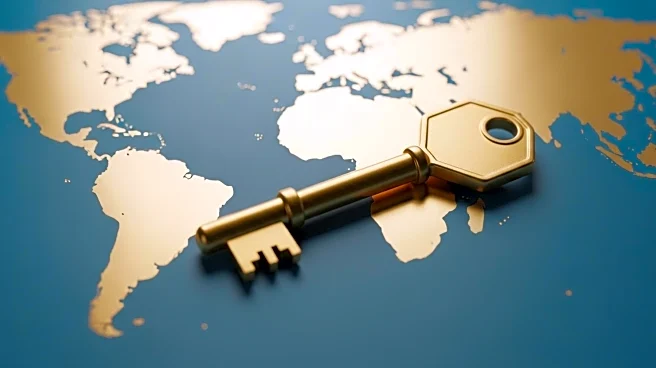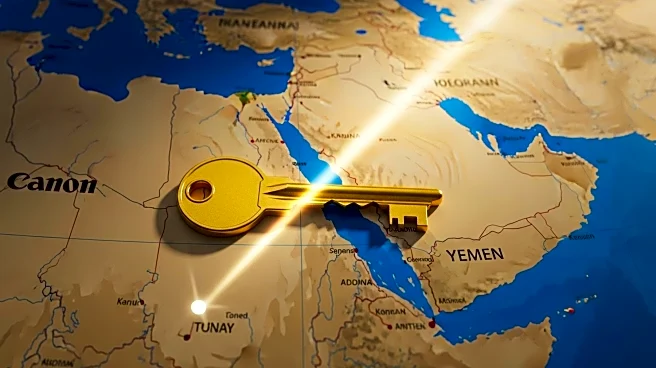What's Happening?
The Houthis in Yemen have been using humanitarian aid routes as a strategic tool to exert control over the northern regions of the country. Aid can only enter through Houthi-controlled gateways, such as the Red Sea port of Hodeidah, Sanaa's airport, and a land crossing from Oman, while the southern government-controlled port of Aden is prohibited. This restriction forces aid shipments to take a longer and costlier route from Oman, depriving the southern government of revenue. The Houthis have also targeted Yemen's energy sector, halting oil and gas exports and diverting shipping traffic away from Aden, further crippling the southern government financially.
Why It's Important?
The manipulation of aid routes by the Houthis has significant implications for Yemen's political and economic landscape. By controlling aid access, the Houthis weaken the southern government, undermining its ability to pay salaries and provide basic services, which fuels protests and unrest. This strategy not only strengthens the Houthis' position but also exacerbates the humanitarian crisis in Yemen. The international community faces a challenge in addressing the Houthis' exploitation of aid channels, which could impact future humanitarian efforts and political stability in the region.
What's Next?
The international community may need to reconsider its approach to humanitarian aid in Yemen, potentially strengthening the southern government in Aden to counter the Houthis' control. Shifts in U.S. policy under the Trump administration could create opportunities for a new strategy to limit Houthi exploitation of aid channels. The question remains whether global actors will confront the Houthis' manipulation or continue policies that inadvertently empower the group.
Beyond the Headlines
The Houthis' use of aid as leverage highlights broader ethical and political dilemmas in humanitarian assistance. The situation raises questions about the role of international organizations in conflict zones and the potential for aid to be weaponized by local actors. Long-term solutions may require a reevaluation of aid distribution strategies to ensure they do not inadvertently support conflict dynamics.










